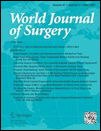Predictive and Prognostic Role of Tumor-Infiltrating Lymphocytes in Patients with Advanced Breast Cancer Treated with Primary Systemic Therapy
Gaurav Agarwal and K. M. M. Vishvak Chanthar contributed equally to this work and are joint first authors.
Copyright comment: Springer Nature or its licensor (e.g. a society or other partner) holds exclusive rights to this article under a publishing agreement with the author(s) or other rightsholder(s); author self-archiving of the accepted manuscript version of this article is solely governed by the terms of such publishing agreement and applicable law.
Abstract
Introduction
Tumor-infiltrating lymphocytes (TILs) are gaining recognition as an important immunological biomarker with therapeutic potential in breast cancer. In this cohort study conducted on patients with advanced breast cancer treated with primary systemic therapy (PST), the TILs concentration was correlated with response to PST and survival outcomes.
Methods
Patients with primary breast cancer treated with PST between 2016 and 2020 were included in this study, approved by IEC, and registered on ClinicalTrials.gov (NCT05250336). Tumor core biopsies obtained prior to starting treatment from 489 patients were assessed for the proportion of stromal TILs by standardized method and categorized into low (0–10% immune cells), intermediate (11–59%), and high (≥ 60%) TILs. TIL concentration and complete pathological response (pCR), disease-free survival (DFS), and overall survival (OS) were correlated.
Results
Of the 489 patients, 372 matched the eligibility criteria for assessment of TILs and made the final study cohort. Among these, 135 were luminal, 129 HER2-enriched, and 108 triple-negative breast cancers (TNBC). Proportions of patients with high TILs were greater in TNBC (15.7%) and HER2-enriched (9.3%), compared to luminal cancers (4.4%). High TIL concentration was correlated with higher pCR in all subtypes. A pCR was achieved in 33.3, 50, and 52.9% of high TIL patients in luminal, HER2-enriched, and TNBC subtypes, respectively (p < 0.05). High TILs were linked to longer DFS and OS in TNBC and HER2-enriched breast cancers.
Conclusion
In this first study of its kind from a low- and middle-income country, high TILs concentration was found to be a predictor of response to PST across all breast cancer subtypes. TILs concentration was found predictive of better DFS and OS in TNBC and HER2-enriched cancers. Prognostic role of TILs in luminal cancers was not so apparent.




